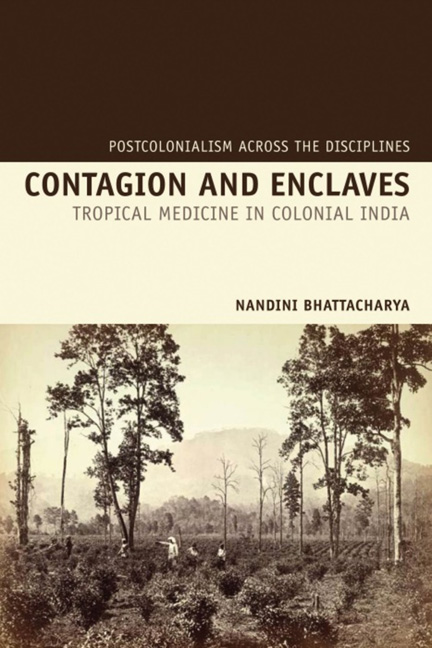Book contents
- Frontmatter
- Dedication
- Contents
- List of Illustrations
- List of Tables
- Acknowledgements
- List of Abbreviations
- 1 Disease and Colonial Enclaves
- 2 The Sanatorium of Darjeeling: European Health in a Tropical Enclave
- 3 Pioneering Years in Plantation and Medicine in Darjeeling, Terai and Duars
- 4 The Sanatorium Enclave: Climate and Class in Colonial Darjeeling
- 5 Contending Visions of Health Care in the Plantation Enclaves
- 6 The Plantation Enclave, the Colonial State and Labour Health Care
- 7 Tropical Medicine in Its ‘Field’: Malaria, Hookworm and the Rhetoric of the ‘Local’
- 8 Habitation and Health in Colonial Enclaves: The Hill-station and the Tea Plantations
- Bibliography
- Index
3 - Pioneering Years in Plantation and Medicine in Darjeeling, Terai and Duars
- Frontmatter
- Dedication
- Contents
- List of Illustrations
- List of Tables
- Acknowledgements
- List of Abbreviations
- 1 Disease and Colonial Enclaves
- 2 The Sanatorium of Darjeeling: European Health in a Tropical Enclave
- 3 Pioneering Years in Plantation and Medicine in Darjeeling, Terai and Duars
- 4 The Sanatorium Enclave: Climate and Class in Colonial Darjeeling
- 5 Contending Visions of Health Care in the Plantation Enclaves
- 6 The Plantation Enclave, the Colonial State and Labour Health Care
- 7 Tropical Medicine in Its ‘Field’: Malaria, Hookworm and the Rhetoric of the ‘Local’
- 8 Habitation and Health in Colonial Enclaves: The Hill-station and the Tea Plantations
- Bibliography
- Index
Summary
This chapter traces the expansion of tea plantations in the three ‘tea districts’ of northern Bengal: the Darjeeling hills, its foothills, the Terai, and contiguously in the plains of Duars. While the enclave of Darjeeling was constructed as a European escape from tropical diseases, the plantation enclave was created through modes of heroism and adventure associated with the colonization of ‘diseased’ lands. The plantation system of Darjeeling and Duars marked a break from the existing agrarian policies and practices of the colonial government in India. Agrarian revenue represented the mainstay of income for the colonial government. From the mid-nineteenth century, with commercialization of agriculture and the integration of colonial India with the global economy, new models of agrarian practice were consolidated. These included the leasing of previously uncultivated (although not unoccupied) land, designated as ‘wastelands’ to mostly British private entrepreneurs, and the introduction of plantation crops and methods. Encouraged by government land grants, entrepreneurs introduced plantation crops such as tea and coffee, cinchona, and commercialized farming of apples and strawberries. Their cultivation benefitted from extensive research on transplantation and acclimatization of foreign species in different parts of the British Empire. Therefore, although the tea plantations were huge isolated tracts with a few resident planters and thousands of labourers, they were also part of important economic and structural changes in other parts of the country. These plantations co-existed with other modes of agrarian production; for instance, agricultural labourers in the adjacent rice fields worked as casual (basti) labourers within the plantations in the peak seasons.
The planters and physicians employed by the tea estates lived within the estates for their working lives. Historians of the tea plantations in Assam and Bengal writing on the labour movements in the area have validated the understanding of tea plantations as enclaves of a particular kind, isolated sites where the labourers had little freedom of mobility, and where the rule of the planter was sovereign, even in the non-contractual northern Bengal tea plantations.
- Type
- Chapter
- Information
- Contagion and EnclavesTropical Medicine in Colonial India, pp. 53 - 83Publisher: Liverpool University PressPrint publication year: 2012



